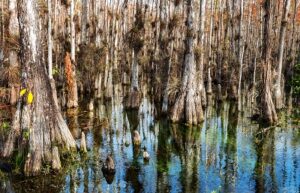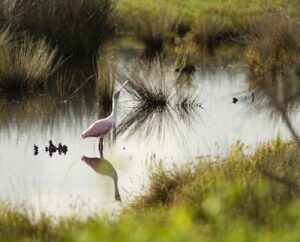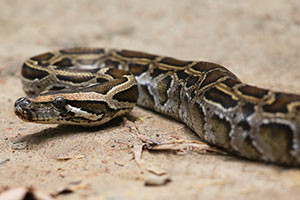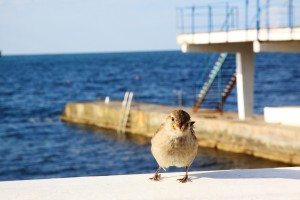 In a blog post last week, we discussed two different ecosystems in the Everglades: freshwater sloughs and freshwater mark prairies. Those are just two of many of the ecosystems within the Everglades.
In a blog post last week, we discussed two different ecosystems in the Everglades: freshwater sloughs and freshwater mark prairies. Those are just two of many of the ecosystems within the Everglades.
Each ecosystem looks and acts different and helps the circle of life. On an airboat tour with Captain Mitch, you will pass by many of the Everglades’ ecosystems. For this blog post, we wanted to share some information with you on two more ecosystems in the Everglades.
Cypress: Cypress trees are found in the Everglades in one of three distinct formations. They are a deciduous conifer that can survive in standing water. It’s common to find a cluster of cypress trees in the shape of a dome. Cypress strands occur where cyrpress trees grow in a long, linear shape parallel with the flow of water. Stunted cypress trees (dwarf cypress) grow where there is less than favorable growing conditions.
Marine and estuarine: In the Everglades, the largest body of water is Florida Bay, which has more than 800 square miles of marine bottom covered by submerged vegetation. Seagrass and algae provide food and shelter to many marine organisms which sustains the food chain. There is also a lot of corals and sponges, fish, crustaceans and mollusks that call the waters of the Everglades home.
As you can see, there’s lots of moving parts that make these ecosystems thrive, so it’s important to protect and care for all these different ecosystems as they all play a critical role in the lifecycles of endless plant, animal, and insect species.
Want to see a few different ecosystems up close?
Come on down and enjoy a fun trip out on the water exploring the Everglades on an airboat tour that leaves from Everglades City. Captain Mitch’s Everglades Private Airboat Tours is open 7 days a week from 8:30 a.m. to 4:30 p.m. If paying by cash, adults cost $40 (plus tax) and children 12 and under cost $20 (plus tax. If paying by credit card, adults cost $45 (plus tax) and children cost $25 (plus tax).
To book an airboat trip in the Everglades, call Captain Mitch’s Airboat Tours at 239-695-3377 or click Everglades airboat tour page.
 In a blog post last month, we discussed two different ecosystems in the Everglades: pinelands and hardwood hammock. Those are just two of many of the ecosystems within the Everglades.
In a blog post last month, we discussed two different ecosystems in the Everglades: pinelands and hardwood hammock. Those are just two of many of the ecosystems within the Everglades.  The Burmese Python is an invasive species to the Everglades, causing a lot of destruction. In July, 5,000 Burmese pythons have been captured in the Evergla
The Burmese Python is an invasive species to the Everglades, causing a lot of destruction. In July, 5,000 Burmese pythons have been captured in the Evergla The Cape Sable seaside sparrow is an endangered species in the Everglades.
The Cape Sable seaside sparrow is an endangered species in the Everglades. 





